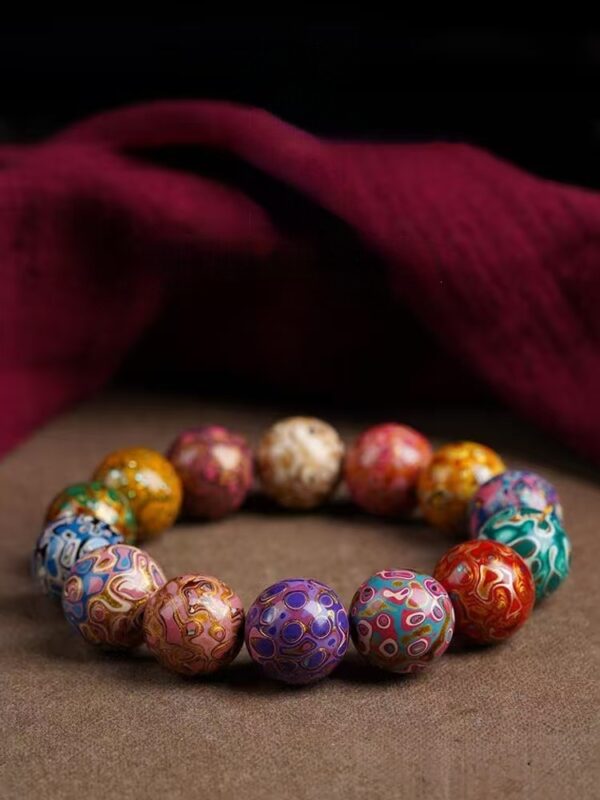
Lacquer beads are a kind of handicraft with unique charm, which are closely related to intangible cultural heritage. In China, lacquer beads are made by applying the traditional lacquer art to wooden beads. They are known for their complex production process and beautiful appearance. Here is a detailed introduction:
Historical Origin
The history of lacquer beads can be traced back to ancient times. Lacquer art in China has a long history, dating back to the Hemudu culture more than 8,000 years ago when lacquerware appeared. Lacquer beads originated in the Tang Dynasty and were continuously developed and improved through the Song, Yuan, Ming, and Qing dynasties. The technique of decorating wood beads with lacquer is one of the important manifestations of the national intangible cultural heritage, Fuzhou bodiless lacquerware painting technique.
Production Process
- Preparing Wooden Beads: Select suitable wood, such as aged wood or wood with high density, to prevent deformation and cracking.
- Applying Lacquer: Use natural lacquer, also known as raw lacquer, to evenly apply it to the surface of the wooden beads. After each application of lacquer, the beads need to be placed in a shaded and dry place to dry and then polished. This process may be repeated many times to increase the thickness and texture of the lacquer layer. The color of the lacquer can be adjusted with natural mineral and plant pigments.
- Creating Patterns: Various pattern – creating processes are adopted, such as mother – of – pearl inlay, rhinoceros – skin lacquer, and sprinkling lacquer powder, to increase the decorative effect and uniqueness of the lacquer beads.
- Stacking Colored Lacquer: According to the design requirements, apply different colors of lacquer, such as vermilion lacquer, lake – blue lacquer, and light – green lacquer, to make the lacquer beads present rich color layers.
- Foil – pasting Process: Foil – pasting, such as gold foil, may be carried out to enhance the luster and gorgeousness of the lacquer beads.
- Repeated Polishing: Through multiple times of polishing, the collision between the lacquer layers produces different effects, revealing unique color patterns. The polishing process requires patience and care, and different forces and angles will make the pattern of each lacquer bead unique.
- Final Polishing: Finally, carry out the polishing treatment to make the surface of the lacquer beads smoother and more shiny.
Characteristics and Value
- Unique Aesthetic Value: The lacquer beads are bright in color and beautiful in decoration. They can be made into pendants, bracelets, stationery accessories, and other ornaments, which are full of the simple, thick, elegant, and soft luster of lacquerware.
- Cultural Heritage Value: As an important carrier of traditional lacquer art, lacquer beads inherit the ancient craftsmanship and cultural connotations, reflecting the wisdom and creativity of the Chinese nation and having important cultural heritage value.

